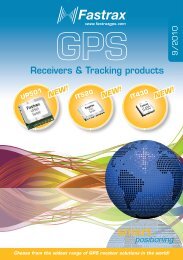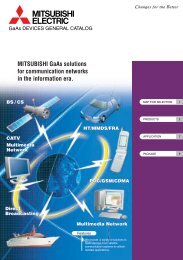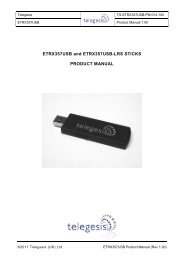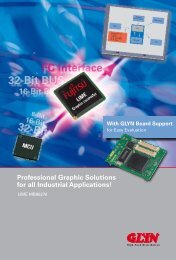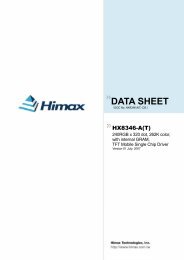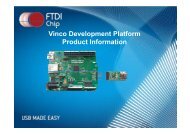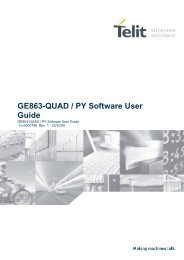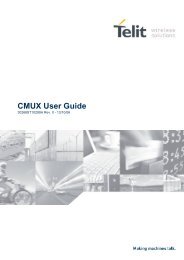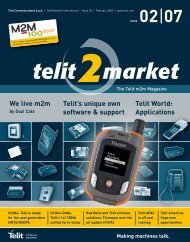FAQ's S Last changes: 07.05.2007 - Glyn High-Tech Distribution
FAQ's S Last changes: 07.05.2007 - Glyn High-Tech Distribution
FAQ's S Last changes: 07.05.2007 - Glyn High-Tech Distribution
You also want an ePaper? Increase the reach of your titles
YUMPU automatically turns print PDFs into web optimized ePapers that Google loves.
Q: Do the UACB supports Mac OS<br />
A: Since MAC OS 10.xx the UACB will work with Mac OS. We do not guaranty that the<br />
UACB will also work with Mac OS 9.xx.<br />
FAQ’s<br />
Q: I see that the UACB has 12 GPIO Pins how I can get access over USB from a Windows<br />
application<br />
A: You will find sample code in our service area under:<br />
UAC35xxB > Software > Code samples > Windows<br />
Q: Which of the 12 GPIO pins are used by the internal firmware<br />
A: Codec Firmware:<br />
GPIO 0 = Main output Vol. up<br />
GPIO 1 = Main output Vol. down<br />
GPIO 2 = Main output Mute toggle<br />
GPIO 3 = Bass-Boost<br />
GPIO 4 = Mic Mute (not visible on windows side).<br />
GPIO 10 = <strong>High</strong> at start-up = No HID => all GPIO inputs above without function!<br />
Headset Firmware:<br />
GPIO 0 = Main output Vol. up<br />
GPIO 1 = Main output Vol. down<br />
GPIO 2 = Main output Mute On-off toggle<br />
GPIO 3 = Bass-Boost<br />
GPIO 4 = Mic Mute (not visible on windows side).<br />
GPIO 5 = <strong>High</strong> at start-up = No HID => all GPIO inputs above without function!<br />
Q: How can I switch off the HID functionality (e.g. Vol. up/down, Mute) via GPIO’s<br />
because I need the GPIO’s for something else<br />
A: Connect GPIO 10 to DVDD (high) before you power up (USB enumeration) the device.<br />
After USB enumeration you can remove the connection to GPIO 10. No HID descriptor<br />
will be loaded.<br />
UAC3556B G6 (codec ROM firmware) not working like described above.<br />
UAC3556B G7 (codec ROM firmware) is working like described above.<br />
UAC3576B H7 (codec ROM firmware) is working like described above.<br />
Q: I'm reading I2C data from the bus and bridge it via UACB and USB to my Windows<br />
application. I increased the I2C bus speed from 100KHz to 400KHz but see no speedup.<br />
A: the I2C limitations are on the USB bus. Because our device will only support full<br />
speed there are the following limitations:<br />
Internal we communicate via Vendor specific requests (I2C) to pipe 0 with a FIFO<br />
size of max 64Byte. This means in max you can<br />
read/write one I2C package of max. 64Byte in 1ms on a UHCI controller (512KBit/s)<br />
or<br />
read/write 13 I2C package of max. 64Byte in 1ms on an OHCI controller (6.6MBit/s).<br />
Because most I2C commands will only have some bytes you will never reach the<br />
400KHz clock speed via USB.<br />
The only quick solution is to use an OHCI to speed up your I2C read/write.<br />
In no event shall Micronas be liable for indirect, incidental, consequential, punitive, special or other damages whatsoever including without limitation,<br />
damages for loss of business profits, business interruption, loss of business information, and the like, arising out of or relating to the use of or the<br />
inability to use the Application<br />
Note, even if Micronas has been advised of the possibility of such damages, except personal injury or death resulting from Micronas’ negligence.<br />
G<br />
S <strong>Last</strong> <strong>changes</strong>: <strong>07.05.2007</strong>



